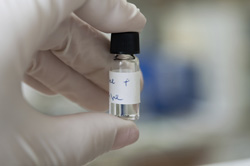Enhancing spectroscopic methods for chemical quality control
Infrared (IR) spectroscopy is used in countless fields to identify the atomic elements that make up materials (qualitative) and the amounts of them present (quantitative). It is based on the fact that the spectrum of individual chemical elements is like a fingerprint – no two elements have the same atomic spectrum. Near-IR (NIR) spectroscopy refers to its reliance on the NIR range of wavelengths used by the system. NIR spectroscopy enables relatively deep penetration with no sample preparation. This makes it useful in probing bulk materials but also creates issues of sensitivity related to non-linear particle effects such as multiple light scattering, or scattering of a photon multiple times before it is detected. One of the most promising methods of dealing with scatter is based on separating these non-linear scattering effects from absorption via application of radiative transfer theory related to light propagation. It attempts to obtain a measure of absorption that is independent of path length (variable and of limited use due to multiple scattering effects) and is instead directly proportional to concentrations of constituents. Having created a scatter correction methodology based on the above, European researchers initiated the ‘Advances in spectroscopic monitoring of styrene emulsion polymerization’ (Asmosep) project to enhance the previous model by incorporating non-linear particle effects into the bulk absorption coefficient previously extracted by inversion of the radiative transfer equation. Further, they sought to evaluate the new method using styrene emulsion polymerisation as a test case. Scientists focused on scatter correction and calibration, the measurement setup and analysis time. The result was a novel scatter correction method for quantitative NIR analysis of turbid samples with enhanced accuracy and robustness over an unlimited range of scatterer sizes. In addition, the analysis was fast enough for online applications including monitoring and analysis of chemical concentrations in a turbid sample.



